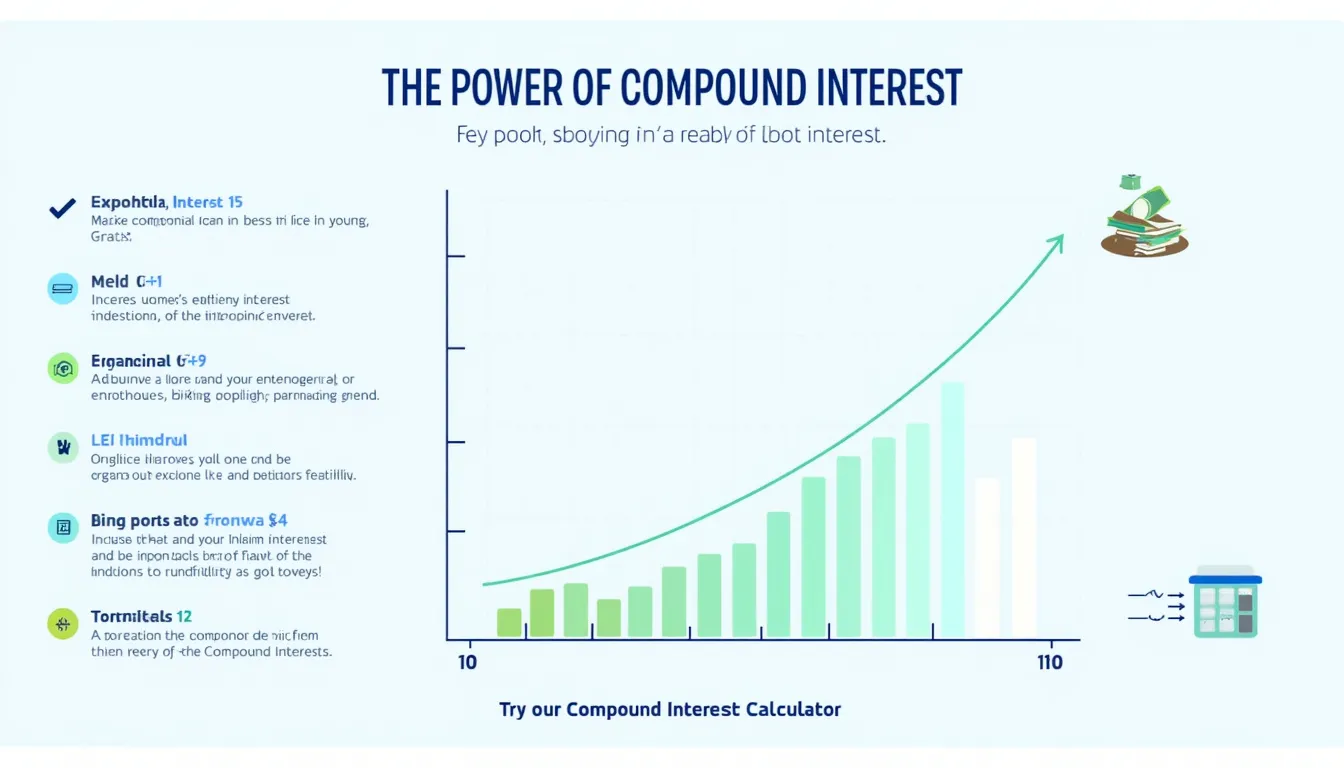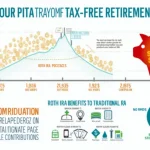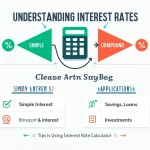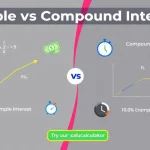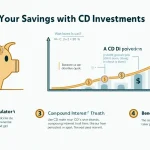Compound Interest Calculator
Is this tool helpful?
How to use the tool
- Initial Principal ($)
• Example 1: 18,500 • Example 2: 27,750 - Initial Interest Rate (%)
• Example 1: 6.2 • Example 2: 8.4 - Number of Yearly Contributions
• Example 1: 12 • Example 2: 25 - Yearly Contribution Amount ($)
• Example 1: 2,750 • Example 2: 5,600 - Subsequent Interest Rate (%)
• Example 1: 5.0 • Example 2: 6.8 - Press “Calculate.” The future value appears instantly.
Underlying formulas
The calculator applies continuous compounding to both the starting lump sum and each yearly deposit:
$$ A = P\,e^{r t} + \sum_{i=1}^{t} C\,e^{s i} $$- P = initial principal
- C = annual contribution
- r = initial rate (decimal)
- s = subsequent rate (decimal)
- t = total years
Worked example
Inputs: P = 20,000; r = 6 %; C = 3,000; s = 5 %; t = 12 years.
- Lump-sum growth: 20,000 × e0.06 × 12 ≈ 41,088.66
- Deposit growth: 3,000 × ∑i=1…12e0.05 i ≈ 50,678.90
- Future value: 41,088.66 + 50,678.90 ≈ 91,767.56
Quick-Facts
- Continuous compounding uses Euler’s number 2.71828 (NIST Digital Library of Mathematical Functions, 2023).
- Formula maximises growth by treating interest as added every instant (Investopedia, 2024).
- Real-world high-yield savings average 4–5 % APY in 2024 (FDIC Weekly Rates, 2024).
- IRAs allow ≤ 6,500 USD yearly contribution for those < 50 yr (IRS Pub 590-A, 2024).
FAQ
What is continuous compound interest?
Continuous compounding applies interest an infinite number of times per period, producing $$A=P\,e^{rt}$$ where e≈2.71828 (NIST, 2023). This yields the maximum possible growth for a fixed nominal rate.
Why does the form ask for two rates?
Your initial deposit may earn a promotional rate while later deposits earn the prevailing rate. Distinct fields let you model both scenarios accurately (Federal Reserve Consumer Guide, 2023).
Can I change contribution frequency?
This version assumes yearly deposits. To model monthly deposits, divide the annual amount by 12 and set contributions to the total number of months—then convert rates to monthly decimals.
How accurate is the result?
The math is exact, but taxes, fees and inflation alter real returns. U.S. inflation averaged 3.2 % in 2023 (BLS CPI Summary, 2024), reducing purchasing power.
Does continuous compounding really exist in banking?
Banks calculate interest daily or monthly. Continuous compounding is a theoretical upper bound, useful for modelling and pricing derivatives (Hull, Options & Futures, 2022).
How do I get the decimal rate?
Divide the percentage by 100. For 6.8 %, use 0.068.
What is Euler’s number?
Euler’s number e is the limit of (1 + 1/n)n as n→∞ and underpins continuous growth phenomena (Courant, Differential Calculus, 2021).
Is this tool suitable for debt modelling?
Yes. Enter a negative yearly contribution to represent payments and a positive rate to see how fast debt shrinks or grows.
Important Disclaimer
The calculations, results, and content provided by our tools are not guaranteed to be accurate, complete, or reliable. Users are responsible for verifying and interpreting the results. Our content and tools may contain errors, biases, or inconsistencies. We reserve the right to save inputs and outputs from our tools for the purposes of error debugging, bias identification, and performance improvement. External companies providing AI models used in our tools may also save and process data in accordance with their own policies. By using our tools, you consent to this data collection and processing. We reserve the right to limit the usage of our tools based on current usability factors. By using our tools, you acknowledge that you have read, understood, and agreed to this disclaimer. You accept the inherent risks and limitations associated with the use of our tools and services.
